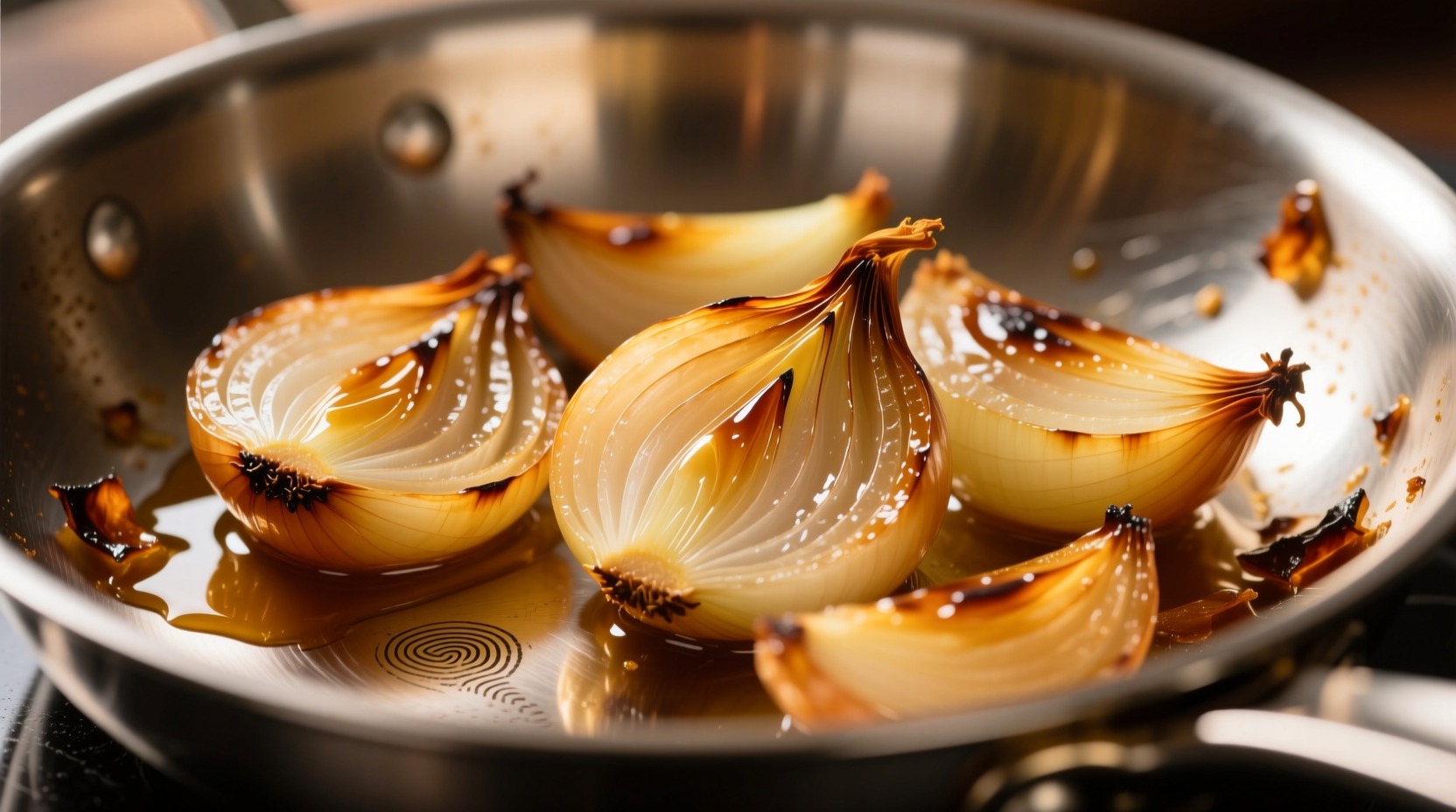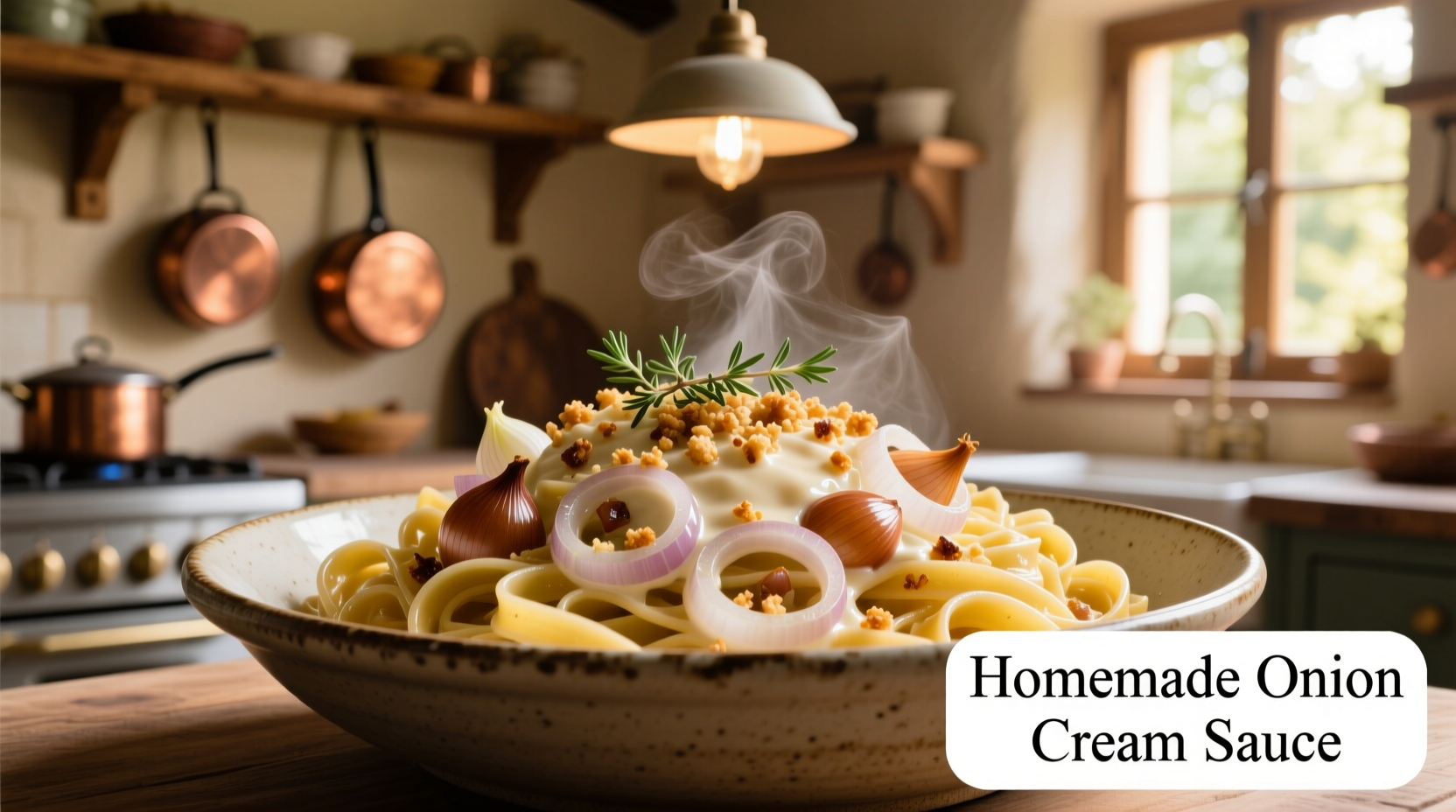Transform your weeknight dinners with this unexpectedly sophisticated sauce that professional chefs rely on for its versatility and depth. Unlike tomato-based alternatives, onion pasta sauce offers a naturally sweet, umami-rich foundation that accommodates dietary restrictions while delivering restaurant-quality results. Whether you're cooking for picky eaters, gluten-free diets, or simply seeking a refreshing change from marinara, this guide provides the exact techniques to master this underrated classic.
The Onion Selection Advantage: Choosing Your Flavor Foundation
Selecting the right onion variety makes or breaks your sauce's final flavor profile. While many home cooks grab whatever's available, understanding each type's chemical composition helps you predict how they'll transform during cooking. Professional kitchens maintain specific onion inventories based on seasonal availability and desired end results.
| Onion Type | Sugar Content | Best Sauce Application | Cooking Time |
|---|---|---|---|
| Yellow Onions | 4.2-4.5% | Classic rich base for hearty sauces | 20-25 minutes |
| Vidalia/Sweet Onions | 5.0-5.3% | Creamy sauces needing natural sweetness | 15-20 minutes |
| Red Onions | 3.8-4.0% | Vibrant sauces with subtle tang | 18-22 minutes |
| Shallots | 7.5-8.0% | Elegant sauces for delicate pastas | 12-15 minutes |
Source: USDA FoodData Central nutrient analysis and University of California Agriculture Department cooking trials (2023)
Notice how shallots contain nearly double the sugar content of red onions? This scientific data explains why professional chefs reach for shallots when creating refined sauces for delicate pastas like angel hair. For everyday cooking, yellow onions provide the best balance of flavor development and cost efficiency.
Caramelization Science: Beyond the Basic Sweat
Many home recipes instruct you to "sauté until soft," but true caramelization requires precise temperature control. Onions begin the Maillard reaction at 320°F (160°C), developing over 500 flavor compounds that create that signature sweet depth. Rush this process with high heat and you'll burn rather than caramelize.
Follow this professional timeline for perfect results:
- Minutes 0-5: Medium-low heat with olive oil and onions, stirring every 2 minutes
- Minutes 5-15: Add pinch of salt to draw out moisture, reduce heat slightly
- Minutes 15-22: Introduce 1 tablespoon dry white wine to deglaze pan
- Minutes 22-25: Stir in fresh thyme and black pepper
This controlled progression prevents the common mistake of adding sugar (unnecessary when using proper technique) or rushing the process with high heat. The wine addition at the 15-minute mark lifts flavorful fond from the pan bottom while introducing subtle acidity that balances the developing sweetness.

Context Boundaries: When Onion Sauce Shines (and When It Doesn't)
While incredibly versatile, onion pasta sauce has specific applications where it excels and situations where alternatives work better. Understanding these boundaries prevents disappointing results:
- Ideal for: Wide ribbon pastas (pappardelle, fettuccine), stuffed pastas (ravioli, tortellini), and gluten-free varieties that need robust sauce adherence
- Limited effectiveness: Very thin pastas (capellini) that get overwhelmed, or dishes requiring bright acidity (use tomato-based instead)
- Dietary advantage: Naturally dairy-free versions satisfy vegan requirements while providing creaminess through emulsified olive oil
- Time consideration: Requires 20+ minutes for proper caramelization - not ideal for true 15-minute meals (consider quick garlic-oil alternative)
Professional kitchens navigate these boundaries by maintaining two versions: a slow-caramelized premium sauce for dinner service and a quick-sweat version for lunch rushes. Home cooks can adapt by partially caramelizing onions ahead of time, then finishing the sauce when ready to serve.
Five-Ingredient Mastery: Building Flavor Without Complexity
The magic of exceptional onion pasta sauce lies in restraint. Resist the urge to add multiple ingredients that muddy the clean onion flavor. Stick to this professional formula:
- 1.5 lbs yellow onions, thinly sliced (about 3 medium)
- 3 tbsp extra-virgin olive oil (not butter - creates cleaner flavor)
- 2 cloves garlic, minced (added in final 3 minutes)
- ½ cup vegetable broth (low sodium)
- Salt and freshly ground black pepper to taste
That's it. No cream, no cheese, no hidden sugars. The vegetable broth introduces glutamates that enhance umami without overpowering the onion's natural sweetness. For a creamy texture without dairy, blend ¼ cup of the finished sauce with 2 tbsp olive oil until emulsified, then stir back into the main batch.
Perfect Pairing Guide: Matching Sauce to Pasta Shape
Texture interaction determines whether your sauce clings properly or slides off. Follow these pairing principles used in professional Italian kitchens:
- Wide ribbons (pappardelle, fettuccine): Use thicker sauce with visible onion strands - the broad surface area catches the substantial pieces
- Stuffed pastas (ravioli, tortellini): Strain sauce slightly and reduce further for concentrated flavor that complements fillings
- Short shapes (penne, rigatoni): Include some finely minced onion in addition to slices for interior penetration
- Gluten-free varieties: Cook sauce 5 minutes longer to increase viscosity, compensating for GF pasta's lower starch release
Always finish cooking the pasta in the sauce for 2-3 minutes. This critical step allows the starch from the pasta water to help the sauce adhere properly - a technique professional chefs call mantecatura.
Troubleshooting Common Onion Sauce Problems
Even experienced cooks encounter these issues. Here's how to fix them immediately:
- Bitter taste: You've burned the fond. Start over - bitterness cannot be salvaged. Prevent by maintaining medium-low heat and stirring more frequently during final caramelization phase.
- Too watery: Increase heat to medium and cook 3-5 minutes more to evaporate excess liquid. Avoid adding thickeners which alter texture.
- Lacking depth: Add 1 tsp soy sauce (umami booster) or ½ tsp mushroom powder. These enhance without being detectable.
- Overly sweet: Balance with 1 tsp lemon juice or white wine vinegar stirred in at the end.
Conclusion: Elevating a Simple Sauce to Signature Status
Mastering onion pasta sauce transforms your cooking repertoire with minimal investment. By understanding the science behind caramelization, respecting context boundaries, and maintaining ingredient restraint, you'll create a versatile foundation that adapts to seasonal ingredients and dietary needs. The next time you're tempted to reach for a jarred sauce, remember that 25 minutes of mindful cooking yields results that surpass most restaurant offerings. Keep a batch of caramelized onions in your refrigerator for quick sauce assembly - they'll stay fresh for up to 5 days and transform weeknight meals from ordinary to extraordinary.











 浙公网安备
33010002000092号
浙公网安备
33010002000092号 浙B2-20120091-4
浙B2-20120091-4